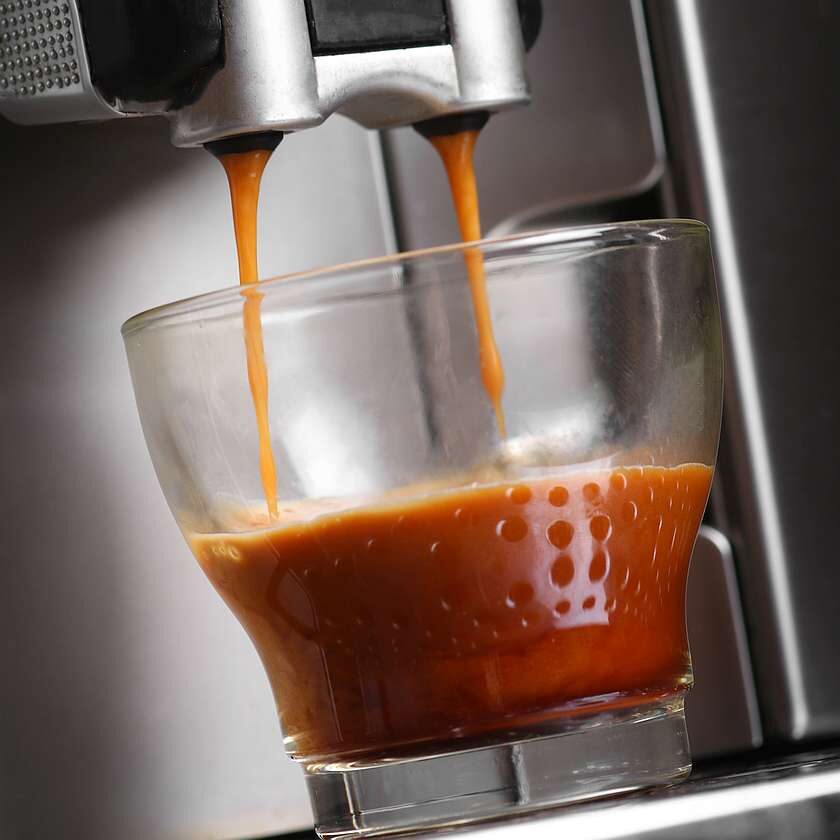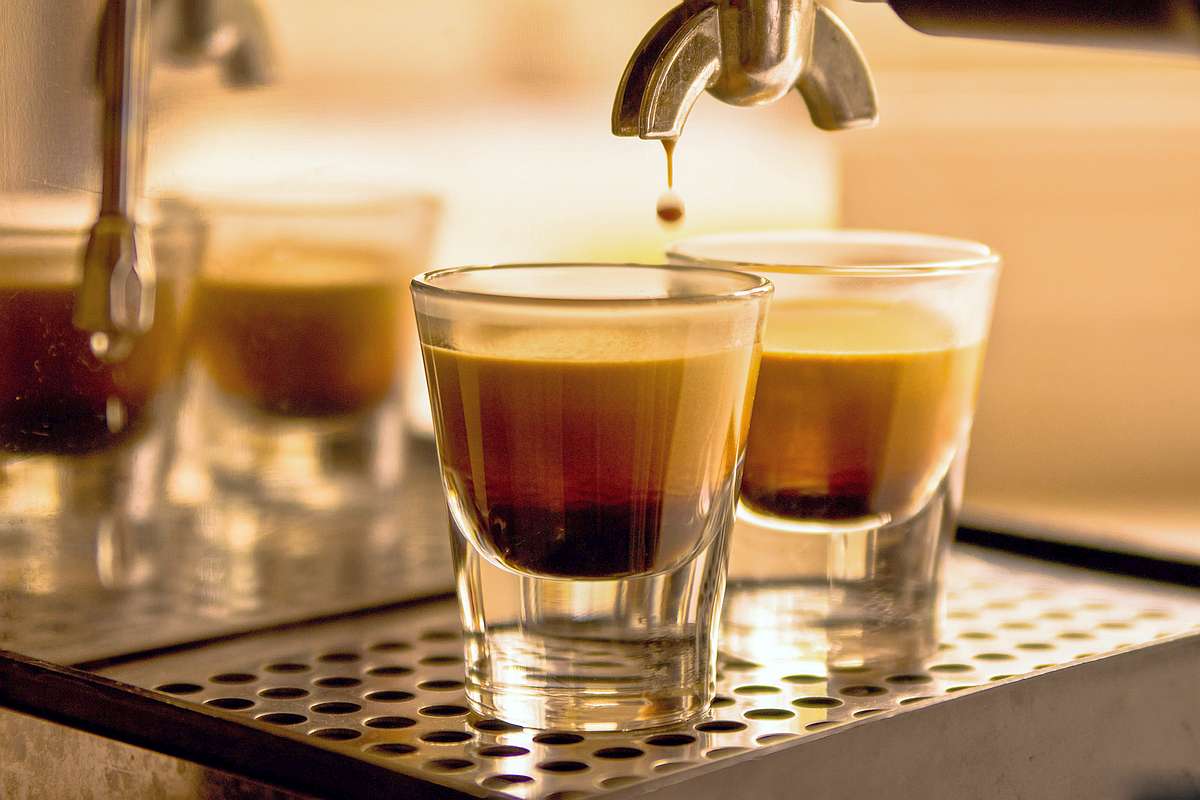Espresso crema is the thick, golden-brown foam that sits on top of a freshly brewed espresso. It is made up of coffee oils, coffee solids, and bubbles of carbon dioxide gas. Crema is important because it adds bitterness and body to the espresso, and it also helps to protect the coffee from going stale.
Crema is created when the hot water from the espresso machine comes into contact with the coffee grounds. The water extracts oils and soluble solids from the coffee, and the carbon dioxide gas is released. The crema forms when the coffee and water mix together and the carbon dioxide bubbles rise to the surface.

Crema Composition
Espresso crema is made up of coffee oils, coffee solids, and carbon dioxide gas. The coffee oils are what give the crema its flavor and aroma. The coffee solids add body and thickness to the crema. The carbon dioxide gas is what gives the crema its bubbles.
Ernesto Illy and Luciano Navarini have an interesting article about crema, and they explain that crema stability is determined the composition and quality of the various proteins, surfactants, lipids, and polysaccharides in the coffee beans.
In the end, what is worth retaining is that crema is much more complex than it is discussed, and reducing it to fines, coffee oils and CO2 is simplistic and it doesn’t reflect the reality. Yes, the fats from the coffee beans are critical for the formations of the tiny coffee bubbles, and fat is an important component, but crema is much more complex.
It looks like the ability of a coffee bean to produce crema is impeded by coffee oils and encouraged by proteins and polysaccharides.
Why Is Crema Important?
Crema is important because it contributes to the flavor and aesthetics of the espresso shot.
It also adds a layer of protection on top of the espresso
Espresso crema is important as an indication of a quality espresso shot. Missing crema on a shot could mean poor espresso extraction, or stale coffee.
Crema adds body to the espresso, and it also helps to protect the coffee from going stale. The layer of crema helps to protect the coffee by forming a barrier between the coffee and the air. This barrier slows down the process of oxidation, which is what causes coffee to go stale.
While it can seem that a great crema is the definition for a perfect cup of espresso coffee, it is not as important as many people claim. There are many factors that go into making a great cup of espresso including finding the prime espresso beans, the grind size, temperature, water pressure, etc. However, there is one thing that seems to be the most difficult aspect to master – getting the crema just right.
Many people spend hours trying to achieve the perfect crema. However, in my experience, perfect crema is not an absolute indication of a great tasting shot. Let’s explain this.
If we take a poor quality coffee bean batch, and we roast it to a dark roast degree, we will get a decent amount of crema. However, the coffee will taste bad.
This is why Robusta gets a bad reputation. Many times people use bad quality Robusta for espresso blends. This will produce plenty of crema, but it will make the coffee taste bitter and burnt. Despite the bad reputation, we’ll see in a moment why and how Robusta is a great component in an espresso blend.
Is Crema Good?
There is no simple answer to this question. Some people love the taste of espresso crema, while others think it is too bitter. Ultimately, it comes down to personal preference. However, many coffee experts believe that the perfect espresso should have a thick layer of crema on top.
There is a myth that crema adds bitterness, which is only partially true. There is some bitterness that comes from the coffee oils, and this is not a myth. But those oils are not more bitter than the coffee.
There are baristas that proposed scraping off completely the crema. While I respect them, and they brought so much to the coffee community, I disagree with the practice of removing crema from the shot.
In my opinion, crema tastes great. It gives the espresso not only its renowned mouthfeel, but it gives subtle flavors that are only present in coffee oils.
The only time crema tastes overly bitter is when we use bad coffee beans. Poor quality coffee beans will reflect the burnt flavors in both the coffee liquid and in the crema. But the harsh flavors will be more prominent in crema.
We talked about crema composition, and we saw that crema has a high
How Does the Perfect Crema Look Like?
Espresso crema has a thick, golden-brown foam that sits on top of a freshly brewed espresso.
There is not a definitive consensus in barista circle about what is the perfect crema. As a general rule, a shot of espresso has a decent amount of crema that that lingers for at least two minutes.
There is a misconception that if you have too much crema there is not enough espresso. This is not true. You can ‘t have more than 25% crema in your cup, unless you are using some foaming agent, or you are creating faux crema. But the general rule is that 5 to 10% crema in the cup is a good amount.
The reason you can’t have too much crema is because there are not enough compounds in the beans to create it. We have a section about fax crema later, if this is something you are interested in.
Troubleshooting Crema
Here are some tips to help troubleshoot crema.
- The most important reason for a missing crema are the stale beans.
Coffee beans lose flavors every day. Coffee oils, which a partly responsible for creating crema, slowly migrate from inside the bean to the outside. When they reach the surface they start to evaporate. The darker the coffee roast the faster coffee goes stale.
Old coffee beans also lose their CO2. CO2 is naturally released by the coffee beans gradually, throughout the shelf life. It is recommended to store roasted coffee beans for no more than 2 weeks. For ground coffee the shelf life is even shorter. - As a general rule, light roasts produce less crema than darker ones.
- If crema is too light in color, that means the extraction is not optimal. It could be over-extracted, or under-extracted. Our espresso extraction article can guide you to nail that perfect shot.
- Over-extraction, under-extraction, and the coarseness of your grind can all affect crema.
- Baristas say that crema drops, if it dissipates too fast. If your crema drops in under a minute, your shot extracted too fast, or the brewing water was not hot enough. With lighter roasts you need hotter extraction.
- The optimal extraction is between 20 and 30 seconds.
- The goal is to pull a coffee shot with a crema that isn’t too thick, nor too skinny, and one that lingered for 2 minutes.
- If you have too much crema in the cup, you’ll have less espresso.
- Many baristas strive for a cream that is about one tenth of the espresso.
- Over extraction, under extraction, and the grind size can all impact crema.
Over extraction and under extraction are cause by using an incorrect grind size, or incorrect dose. An incorrect grind size will also affect the extraction time, and this is the simplest way to fix it. - Going back to dose, if you are using too little coffee, water will pass too fast through the coffee puck, and coffee will under-extract. The shot will not have crema.
- Some coffees will just not produce much crema, but they will brew an amazing shot, with interesting flavors and notes.
- If you are using a pressurized filter basket, crema will drop faster, and will taste differently. The pressurized baskets create a foam, rather than authentic crema.
Conclusion
While crema is an important aspect of a well pulled shot, it is not an essential component. For coffee blends that are designed for espresso, missing crema is a sign of a poor shot. However, some single origin coffees will naturally have a thin layer of crema, but will taste amazing.
